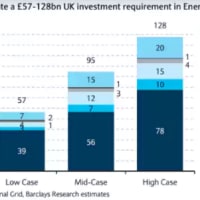Bad sleep may predict Alzheimer's, says study
(睡眠でわかるアルツハイマー予備軍)
BBC:6 September 2012 Last updated at 01:35 GMT
どうしよう。
睡眠障害です。
記憶力も落ちています、というか、落としています。
どうしよう(笑)。


(睡眠でわかるアルツハイマー予備軍)
BBC:6 September 2012 Last updated at 01:35 GMT
Problems sleeping may be an early sign of Alzheimer's if a study in mice also applies to people, say researchers.
マウスを使った研究結果が人間にも適用されるとすれば、睡眠障害はアルツハイマー病の初期兆候である可能性がある、と研究者。
Clumps of protein, called plaques, in the brain are thought to be a key component of the illness.
脳の中のプラーク(斑)がアルツハイマー病の鍵と考えられています。
A study, published in the journal Science Translational Medicine, showed that when plaques first developed, the mice started having disrupted sleep.
サイエンス・トランスレーショナル・メディシン誌に掲載された論文によれば、プラークが最初に発達する際、マウスに睡眠障害が出始めたとのこと。
Alzheimer's Research UK argued that if the link was proven it could become a useful tool for doctors.
アルツハイマー・リサーチUKによれば、この関連性が証明されれば、医師にとって有益なツールになるかもしれないとしています。
The hunt for early hints that someone is developing Alzheimer's is thought to be crucial for treating the disease.
アルツハイマー病の初期兆候を探る研究は、この病気の治療にとって非常に重要だと考えられています。
People do not show problems with their memory or clarity of thought until very late on in the disease. At this point, parts of the brain will have been destroyed, meaning treatment will be very difficult or maybe even impossible.
記憶や思考に障害が出るのは、アルツハイマー病はかなり進んでからのことです。
この時点では既に脳の一部が破壊されています。
つまり、治療は非常に困難であるか不可能である可能性すらあるということです。
'Detectable sign'(検出可能兆候)
It is why researchers want to start early, years before the first symptoms.
以上のことから、研究者は最初の症状が出る何年も前から治療を開始したいと考えています。
One large area of research is in plaques of beta amyloid which form on the brain.
脳を作るβアミロイド斑の研究は大規模に行われています。
Levels of the beta amyloid protein naturally rise and fall over 24 hours in both mice and people. However, the protein forms permanent plaques in Alzheimer's disease.
βアミロイド斑の水準は、マウスも人も、24時間に亘って自然に上がったり下がったりしています。
しかし、このタンパク質はアルツハイマー病の恒久的プラークを作ります。
Experiments at Washington University showed that nocturnal mice slept for 40 minutes during every hour of daylight. However, as soon brain plaques started to form the mice were sleeping for only 30 minutes.
ワシントン大学で行われた研究の結果、夜間動物のマウスは日中は毎時40分間眠りましたが、問題のプラークが作られ始めるや否や、30分しか眠らなくなることがわかりました。
One of the researchers, Prof David Holtzman, said: "If sleep abnormalities begin this early in the course of human Alzheimer's disease, those changes could provide us with an easily detectable sign of [the disease]."
実験に加わった研究者の一人、デイヴィッド・ホルツマン博士はこう語りました。
「ヒトのアルツハイマー病でもこれほど早く睡眠障害が始まるなら、簡単に検出出来る初期兆候ということになるだろう」
"If these sleep problems exist, we don't yet know exactly what form they take, reduced sleep overall or trouble staying asleep or something else entirely."
「このような睡眠障害があるとして、正確にはどのような形であるのか、例えば全体的な睡眠が減るのか、眠っていられなくなるのか、それとも全く別のことが起こるのか、それはまだわからない」
However, findings in mice do not always apply to people as there are many reasons for disrupted sleep.
しかし、睡眠障害の原因は沢山あるので、マウスでの研究結果が必ずしもヒトに適用出来るわけではありません。
Dr Marie Janson, from the charity Alzheimer's Research UK, called for more studies in people to see if there was a link between sleeping patterns and Alzheimer's.
アルツハイマーズ・リサーチUKのマリー・ジャンソン博士は、睡眠パターンとアルツハイマー病の関連性の存在を確認するために、更なる研究を行うことを呼びかけました。
She added: "There has already been research linking changes in sleep patterns to a decline in thinking skills, but these results suggest that disrupted sleep may also be a warning sign of Alzheimer's.
「睡眠パターンの変化と思考能力の低下を関連付ける研究は既にあり、これらの研究結果は睡眠障害はアルツハイマー病のワーニング・サインである可能性があると示唆しています」
"If research confirms specific sleep changes as a possible early marker of Alzheimer's, it could prove a useful strategy for doctors to identify patients at risk of the disease."
「睡眠パターンの特定の変化はアルツハイマー病の初期兆候である可能性がある、と研究で確認された場合、医師がアルツハイマー病予備軍の患者を特定するために有益なストラテジーだと明らかになるでしょう」
どうしよう。
睡眠障害です。
記憶力も落ちています、というか、落としています。
どうしよう(笑)。




















